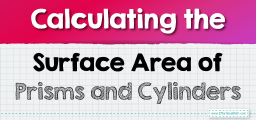How to Understand the Fundamental Properties of Parallelograms
[include_netrun_products_block from-products="product/6-south-carolina-sc-ready-grade-3-math-practice-tests/" product-list-class="bundle-products float-left" product-item-class="float-left" product-item-image-container-class="p-0 float-left" product-item-image-container-size="col-2" product-item-image-container-custom-style="" product-item-container-size="" product-item-add-to-cart-class="btn-accent btn-purchase-ajax" product-item-button-custom-url="{{url}}/?ajax-add-to-cart={{id}}" product-item-button-custom-url-if-not-salable="{{productUrl}} product-item-container-class="" product-item-element-order="image,title,purchase,price" product-item-title-size="" product-item-title-wrapper-size="col-10" product-item-title-tag="h3" product-item-title-class="mt-0" product-item-title-wrapper-class="float-left pr-0" product-item-price-size="" product-item-purchase-size="" product-item-purchase-wrapper-size="" product-item-price-wrapper-class="pr-0 float-left" product-item-price-wrapper-size="col-10" product-item-read-more-text="" product-item-add-to-cart-text="" product-item-add-to-cart-custom-attribute="title='Purchase this book with single click'" product-item-thumbnail-size="290-380" show-details="false" show-excerpt="false" paginate="false" lazy-load="true"]

Step-by-step Guide: Properties of Parallelograms
Definition:
What exactly is a parallelogram? At its core, a parallelogram is a quadrilateral (a shape with four sides) where opposite sides are perfectly parallel.
Opposite Sides are Buddies:
- Not only are the opposite sides of a parallelogram parallel, but they’re also of equal length, making them congruent.
Opposite Angles, Twin Angles:
- Just like the opposite sides, the angles sitting opposite each other in a parallelogram are equal or congruent.
Consecutive Angles Play Nice Together:
- The consecutive (or neighboring) angles in a parallelogram are supplementary. Put simply, if you add their measures, you’ll get \(180^\circ\).
Diagonals’ Special Traits:
- The diagonals of a parallelogram have a knack for cutting each other exactly in half.
- However, unlike some of their quadrilateral cousins, the diagonals in a parallelogram aren’t always the same length.
Calculating the Area:
Want to find out how much space is inside a parallelogram? The formula is:
\(A = b \times h \)
Here, \(b\) stands for the length of the base, and \(h\) represents the perpendicular height (or altitude) from the opposite side to this base.
Examples
Example 1: Discovering the Diagonals
In parallelogram \(ABCD\), if the diagonal \(AC\) spans \(10\) units and \(BD\) stretches over \(8\) units, how long are the segments \(AE\) and \(EC\) when \(E\) is the exact point where \(AC\) and \(BD\) cross paths?
Solution:
Given the nature of parallelograms, their diagonals bisect each other. So,
\(AE = EC = \frac{AC}{2} = \frac{10 \text{ units}}{2} = 5\) units.
Example 2: Finding the Area
Question: Given a parallelogram \(EFGH\) with its base \(EF\) measuring \(6\) units, and a height that runs \(4\) units perpendicular from \(G\) to \(EF\), can you compute the area?
Solution:
Utilize the formula:
\(A = b \times h\)
\(A = 6 \text{ units} \times 4 \text{ units} = 24\) square units.
Practice Questions:
- In a parallelogram, if one angle measures \(70^\circ\), can you figure out the measure of its opposite angle?
- With a side length of \(9\) units and a perpendicular height of \(7\) units from that side, how much space does a parallelogram occupy?
- Inside parallelogram \(LMNO\), if the diagonal \(LN\) stretches out to \(14\) units, can you determine the lengths of segments \(LP\) and \(PN\) when \(P\) marks the spot where the diagonals meet?
Answers:
- The opposite angles of a parallelogram are congruent. So, it’s \(70^\circ\).
- The area totals \(63\) square units.
- Since the diagonals in a parallelogram bisect each other, \(LP = PN = 7\) units.
Related to This Article
More math articles
- How to Master the Road to Achievement: “Praxis Core Math for Beginners” Comprehensive Answer Guide”
- 4th Grade Common Core Math Practice Test Questions
- Top 10 5th Grade ACT Aspire Math Practice Questions
- What Skills Do I Need for the ASVAB Math Subtests?
- Top 10 8th Grade OST Math Practice Questions
- Best Smartphones for Math Teachers
- CLEP College Algebra Formulas
- 10 Most Common 5th Grade STAAR Math Questions
- The Best Teacher Desks in 2026
- Top 10 Tips to Create the SAT Math Study Plan



























What people say about "How to Understand the Fundamental Properties of Parallelograms - Effortless Math: We Help Students Learn to LOVE Mathematics"?
No one replied yet.